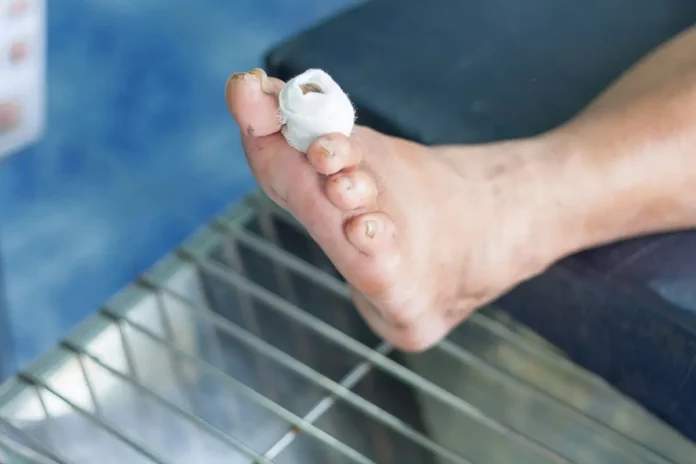Introduction:
Diabetes is a long-lasting health issue that affects millions of people all around the world. While it’s commonly recognized for its influence on blood sugar levels, it also has a big impact on the way wounds heal. In this detailed article, we’ll explore why wounds tend to heal slowly and less effectively in people with diabetes. By the time you finish reading, you’ll have a solid grasp of what causes this problem, the complications it can lead to, and some effective ways to address it.
Why Wounds Often Heal Poorly in Diabetics
When it comes to people with diabetes, wounds can be a real worry. That’s because there are several factors that can slow down the body’s natural healing abilities. To figure out how to best deal with this issue, it’s important to get a handle on what’s causing these problems in the first place.
The Role of High Blood Sugar
One of the main reasons wounds heal poorly in people with diabetes is the elevated levels of blood sugar. High glucose levels can harm blood vessels and reduce blood flow to the injured area. This hampers the delivery of vital nutrients and immune cells necessary for efficient wound healing.
Neuropathy and Nerve Damage
Diabetic neuropathy, which is nerve damage, is a common complication. It can lead to a loss of sensation in the extremities, making individuals less aware of injuries or wounds. Without timely treatment, these unnoticed wounds can worsen and heal slowly.
Impaired Immune Function
Diabetes compromises the immune system’s ability to fight infections. The body’s response to pathogens weakens, making it more challenging to fend off bacteria that can enter a wound. This increases the risk of infections, further delaying the healing process.
Also Read: Should I Worry About My BMI? Unraveling the Truth Behind Body Mass Index
Poor Blood Circulation
Diabetes often results in poor circulation, especially in the lower extremities. Limited blood flow can lead to delayed wound healing as nutrients and oxygen struggle to reach the damaged tissue.
Inflammation and Healing Cascade Disruption
Chronic inflammation is common in people with diabetes, and it interferes with the natural healing process. The body’s inflammatory response becomes unregulated, preventing the timely progression of wound healing stages.
Collagen Production and Tissue Repair
Collagen is a vital component of the skin and other connective tissues. In individuals with diabetes, collagen production may be impaired, affecting the formation of new tissue and slowing down the closure of wounds.
How Diabetic Wound Healing Complications Manifest
It’s crucial to understand how issues with wound healing appear in people with diabetes so that we can spot them early and take action.
Delayed Healing
One of the most noticeable signs is that wounds take longer to heal. Even small injuries might stay open for a while and might need medical attention.
Infections
Infections in wounds are more common in people with diabetes and can become serious if not treated quickly. If you see redness, warmth, or pus around a wound, it could be a sign of an infection.
Ulcer Formation
Chronic wounds can turn into ulcers, which are open sores that are tough to heal. These are more common in diabetic individuals and often happen on the feet.
Gangrene
In severe cases, poor wound healing can lead to gangrene, where body tissue dies because it isn’t getting enough blood. This can be life-threatening and might require amputation.
Compromised Limb Function
Problems with wound healing in diabetics can affect how limbs work, making it hard to walk and do everyday activities.
While diabetics are at a higher risk, not all will experience poor wound healing. It depends on factors like blood sugar control and overall health.
Watch for redness, swelling, warmth, pus, or an unpleasant odor around the wound. These are indicators of infection.
While it can’t be fully reversed, managing blood sugar levels and adopting a healthy lifestyle can slow its progression.
Conclusion:
In summary, it’s vital for both patients and healthcare providers to grasp why wounds tend to heal slowly in people with diabetes. By tackling the root causes and using proven wound care methods, individuals with diabetes can boost their odds of successful wound healing and lower the chances of complications. Keep in mind that seeking medical advice early on is crucial to prevent more serious problems, so don’t hesitate to reach out for help when necessary.
Disclaimer:
The information provided in this article is for educational and informational purposes only. It is not intended as a substitute for professional medical advice, diagnosis, or treatment. Always seek the advice of your physician or another qualified healthcare provider with any questions you may have regarding a medical condition.

